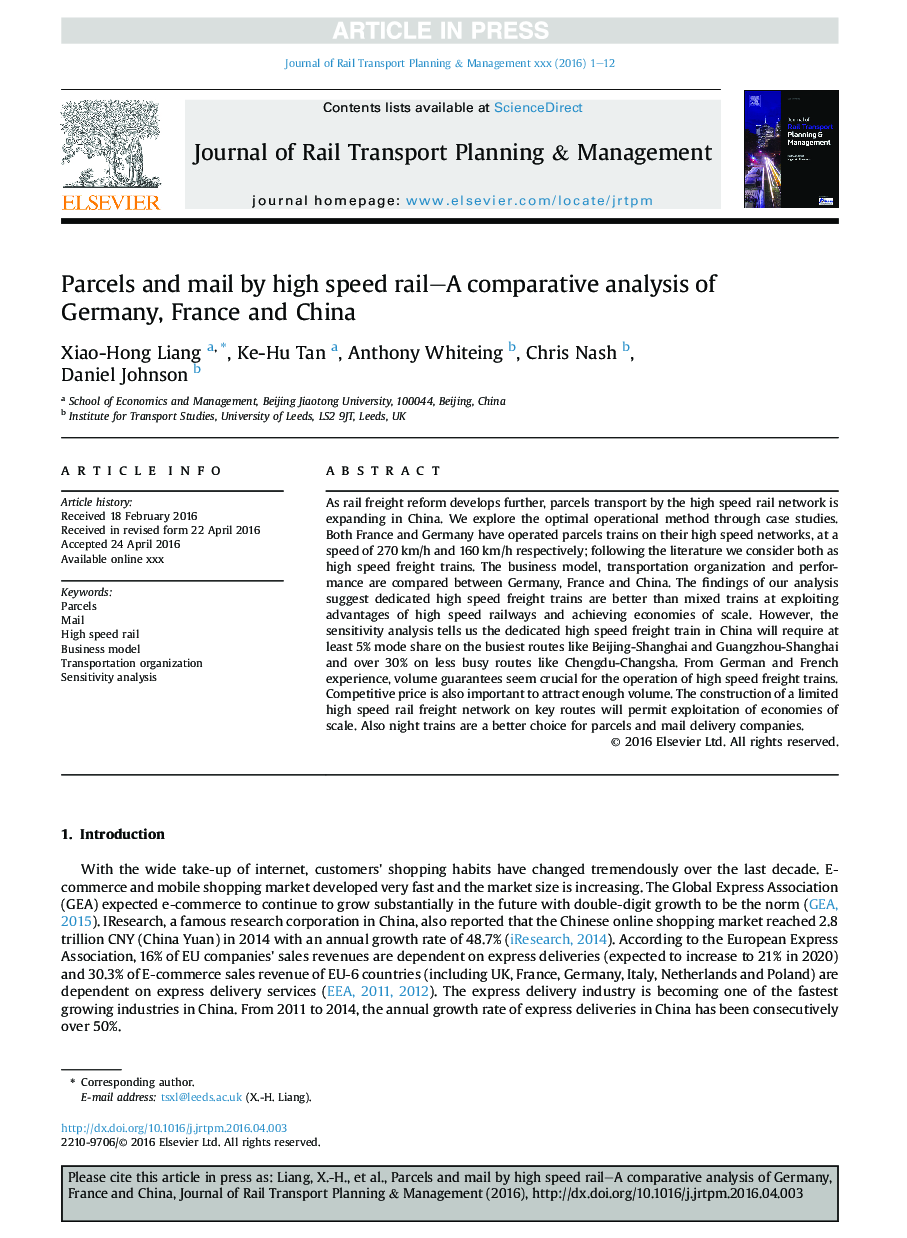| Article ID | Journal | Published Year | Pages | File Type |
|---|---|---|---|---|
| 4923670 | Journal of Rail Transport Planning & Management | 2016 | 12 Pages |
Abstract
As rail freight reform develops further, parcels transport by the high speed rail network is expanding in China. We explore the optimal operational method through case studies. Both France and Germany have operated parcels trains on their high speed networks, at a speed of 270Â km/h and 160Â km/h respectively; following the literature we consider both as high speed freight trains. The business model, transportation organization and performance are compared between Germany, France and China. The findings of our analysis suggest dedicated high speed freight trains are better than mixed trains at exploiting advantages of high speed railways and achieving economies of scale. However, the sensitivity analysis tells us the dedicated high speed freight train in China will require at least 5% mode share on the busiest routes like Beijing-Shanghai and Guangzhou-Shanghai and over 30% on less busy routes like Chengdu-Changsha. From German and French experience, volume guarantees seem crucial for the operation of high speed freight trains. Competitive price is also important to attract enough volume. The construction of a limited high speed rail freight network on key routes will permit exploitation of economies of scale. Also night trains are a better choice for parcels and mail delivery companies.
Related Topics
Physical Sciences and Engineering
Computer Science
Computer Science Applications
Authors
Xiao-Hong Liang, Ke-Hu Tan, Anthony Whiteing, Chris Nash, Daniel Johnson,
